Trombonists (and “ensembly-minded” musicians in general) spend a lot of time thinking about excerpts, passages of music from repertoire. We naturally single out these snippets as places we need to dedicate extra practice time. An excerpt might be an exposed passage, or maybe it’s technically demanding or difficult to play in tune or in a style that’s hard to pull off (or a combination of those things!).
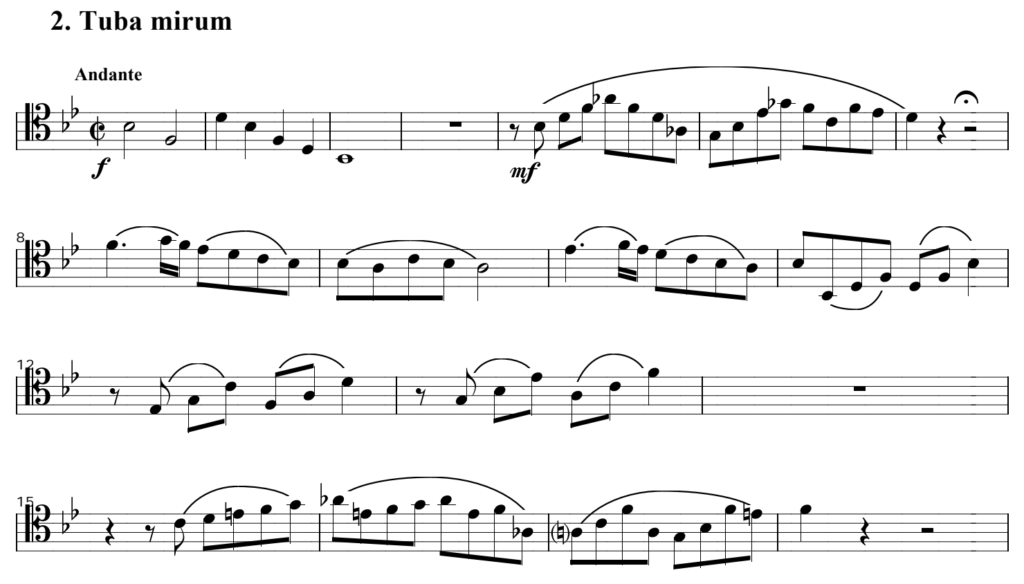
Some excerpts ascend to sacred status: they become measuring devices by which musicians can be compared. These bits of music are requested in auditions for professional ensembles and, because of their important role in finding employment, become the backbone of study for many players. Time and energy are lavished on the traditional excerpt crew (Wagner, Strauss, Mahler, Rossini, Mozart, etc.) and an incredible amount of music gets overlooked: much of it written after 1930 and much of it for ensembles smaller than full orchestra.
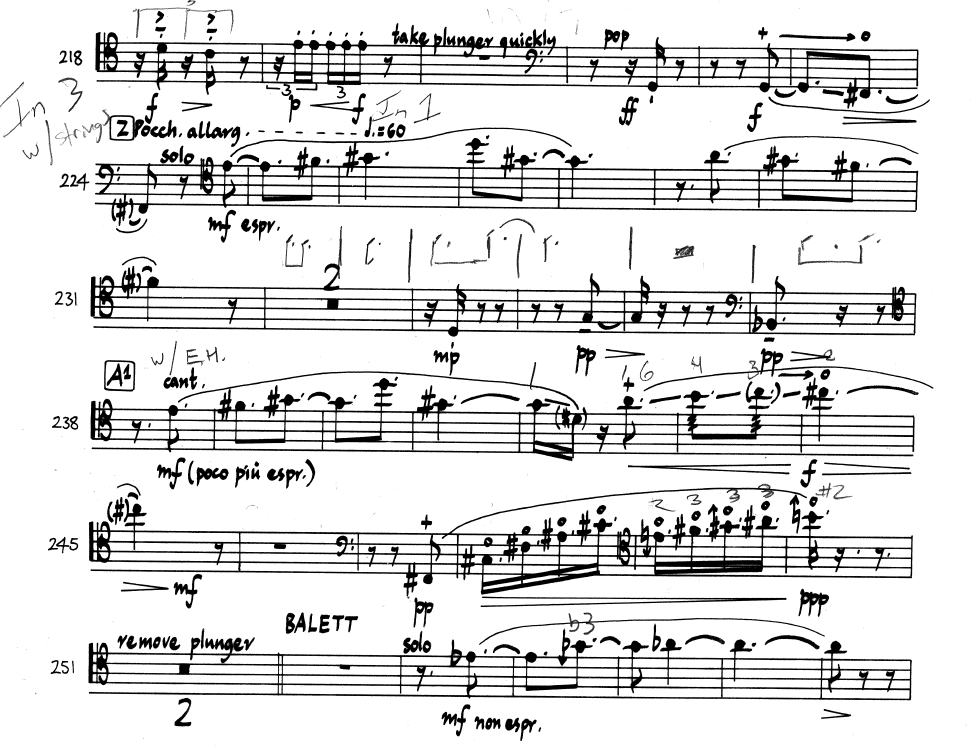
It’s a shame because there’s so much great (and challenging!) contemporary music that deserves some attention. My aim is to make this a series that shines a light on a few contemporary trombone excerpts I’ve been lucky enough to play, and point out some sections that I really enjoyed.
NOTE: If you’re looking for other resources on contemporary trombone excerpts, I know of two books that are dedicated to them: Henry Charles Smith’s Twentieth Century Orchestra Studies and Benny Sluchin’s Contemporary Trombone Excerpts. Smith’s book was published in 1969 which means there’s a ton of music that’s been written since. Sluchin’s book was published in 1996 and includes a significant number of excerpts from solo repertoire (as opposed to ensemble music). I don’t think either are still in print, unfortunately.

Remix by Georg Friedrich Haas (2007)
For Kammerensemble (fl, ob, cl, bsn, tpt, hn, tbn, perc, pno, 2 vln, vla, vc, db)
Right off the bat, I’m cheating. I can’t say there’s an excerpt in Remix because the entire thing is challenging. You could pick any line of music, any page and call it an excerpt. Fortunately, the aim in performing this piece isn’t absolute perfection (this is from Haas himself). Haas says the player’s goal should be to follow the gestures of the music (pitch content, changing dynamics, gradual increase/decrease of the speed of the rhythm). He described the piece as French cooking as opposed to Italian cooking, a cassoulet if you will. Everything is intermixed. The sounds of the instruments blur and, if done well, no one stands out of the texture.
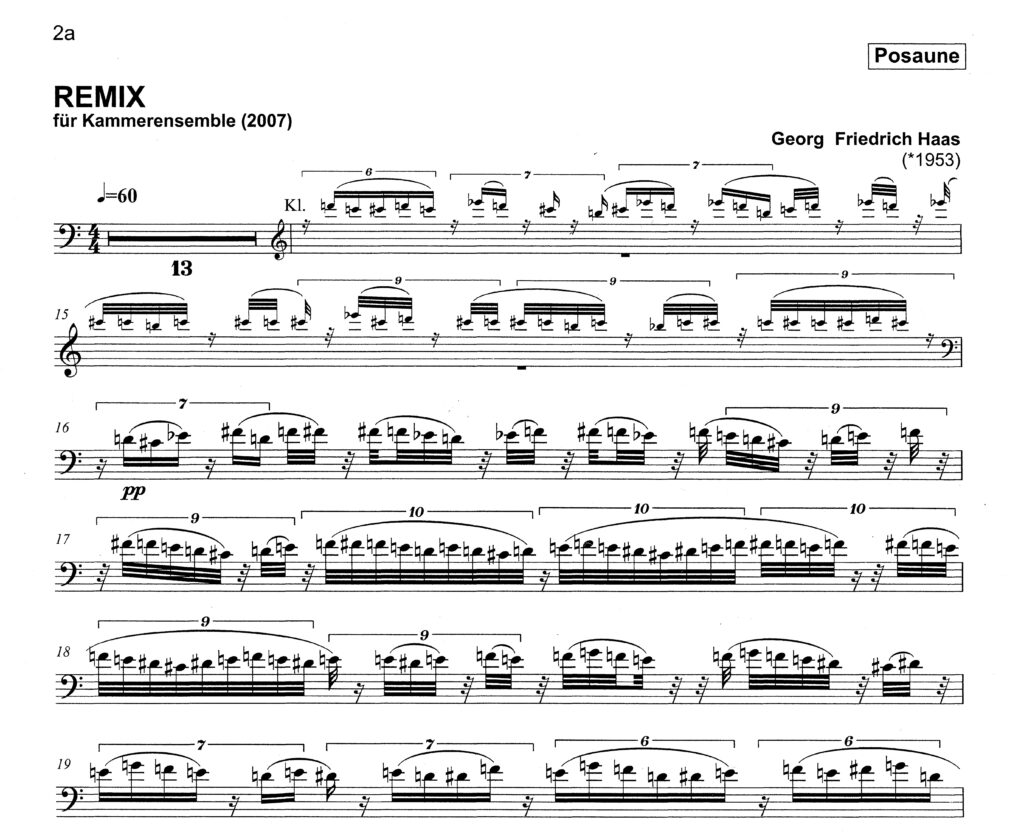
I actually found it more difficult to play “loose” and go for gesture than to attempt to accurately realize what was on the page. My attempt was inevitably imperfect, so maybe I came close to what Haas wanted “by accident.”
In the passage above, from the beginning of the work, the trombone joins a quiet, insistent miasma of sound that began with the lowest instruments. The piece employs extreme dynamics and it’s especially important to play softly here so the loud moments that happen later will be even more effective.
Each phrase contains rests that 1) allow for little breaks while playing (yay!), 2) create a nervous atmosphere, and 3) are absolutely not intuitive. Much of the initial work I put in was just practicing subdividing 7, then 8, then 9, then 10, then 9, then 8, then…
I quickly realized I couldn’t trust myself to subdivide accurately and consistently, and that I needed a super metronome to keep track of where I was. Unfortunately, normal metronomes aren’t great at doing this, so I was off to Sibelius to create a custom click with all the subdivisions.
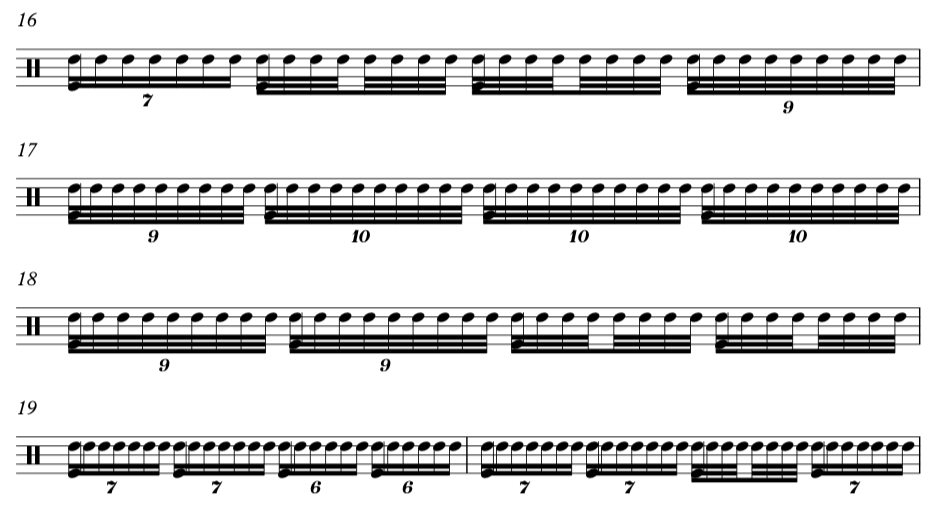
The next step was practicing which parts of the subdivision to play. “1e&a 2e&a” wasn’t going to cut it here. I started slooooooow (♩=30) and gradually worked up. As I internalized the rhythms, I moved the tempo up. Eventually, the technique became a bigger challenge than the rhythm. The 10s, the fastest note values, are equivalent to sixteenths at ♩=150. Definitely not easy but doable in scale patterns…
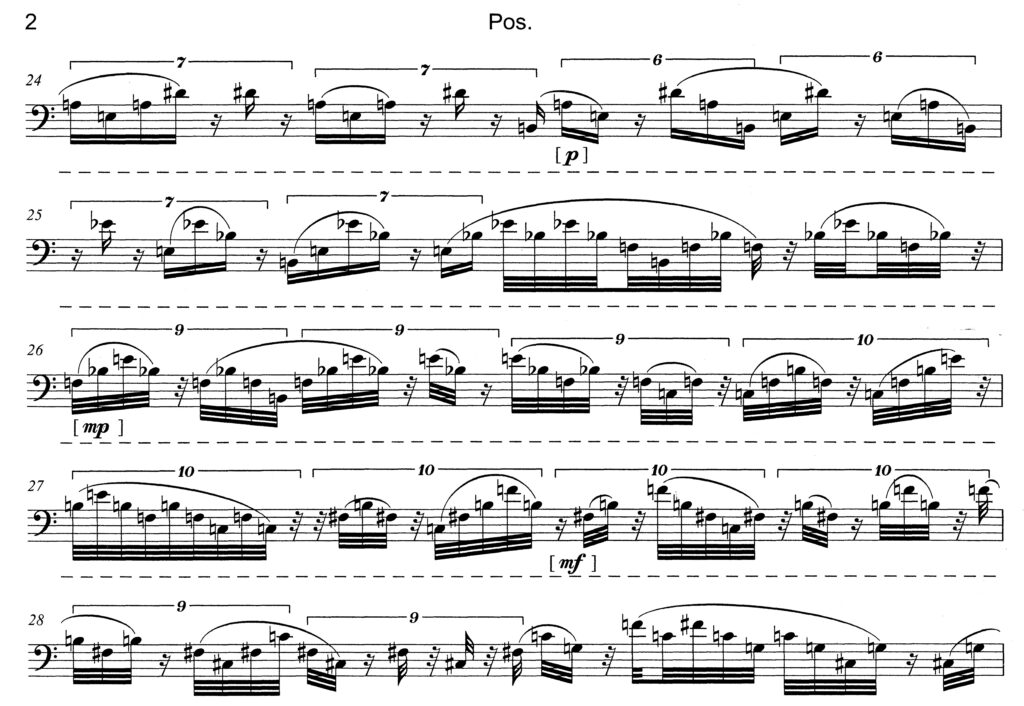
The scale patterns don’t last. As the music progresses, the intervals widen and the challenge increases. Measure 27 (in the image above), at tempo, may very well be one of the most challenging things I’ve played… and that’s just one measure. It comes in the context of 21 other pages/351 other measures.
Which brings me to what may very well be the biggest challenge of the piece: endurance. As the piece continues the range grows. Several times during the piece there are ensemble-wide scalar passages like the one below that ascend or descend over large intervals. Instruments overlap and create a Shepard Tone effect. It’s thrilling to listen to but brutal on the chops if you’re not focused 100% on efficiency (and even then, still brutal).
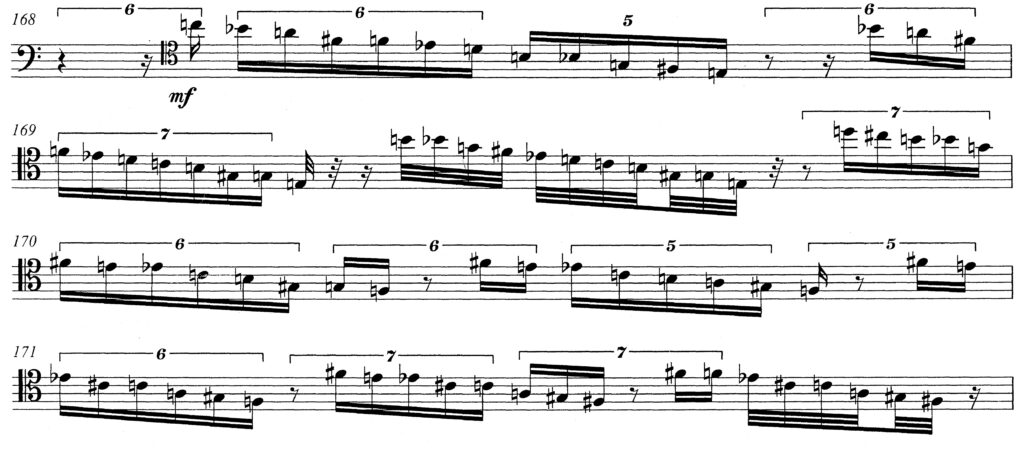
To add to the test of stamina, there’s a moment about two-thirds of the way through the piece where Haas calls for extremely loud C4s, repeated over and over. This is a fantastically intense moment with about half the ensemble hammering these notes.
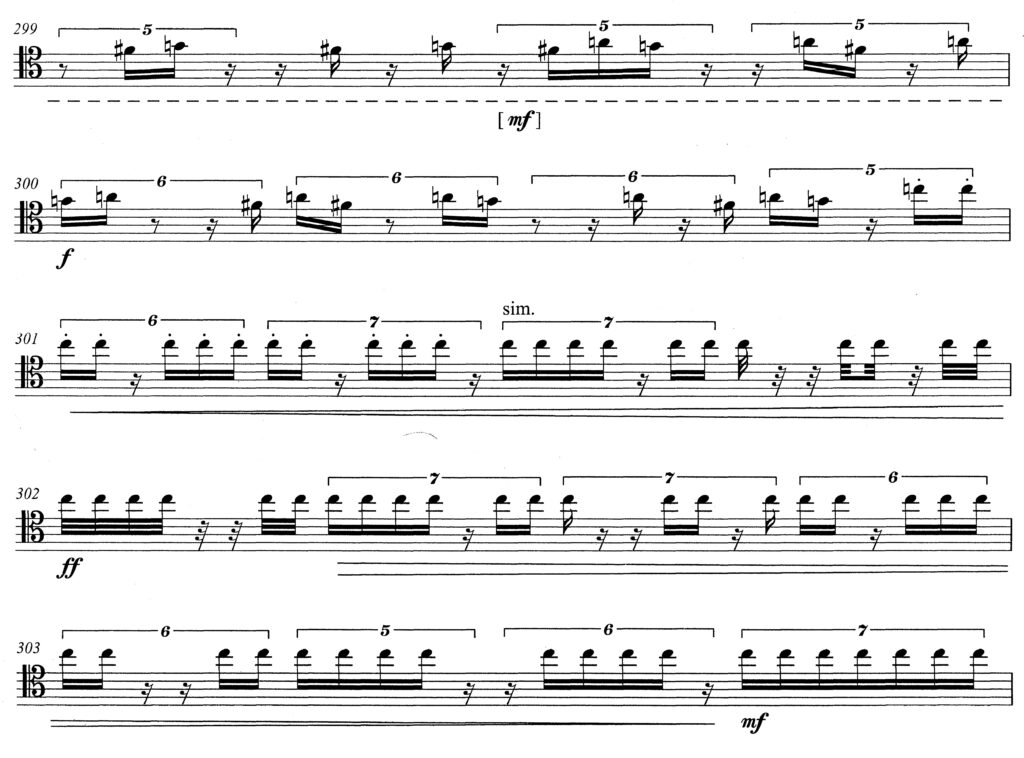
All in all, Remix is unrelenting but a blast to play if you like a challenge. The effect of all the timbres coming together is other-worldly. Unfortunately, after all the work in preparing the piece, I’ve only had one opportunity to perform it but I distinctly remember the silence that followed. I was left with a mixture of exhaustion, sadness, and joy. Sadness from the absence of Haas’s sound world and joy from the feeling of accomplishment that came from the weeks of hard work I put into the piece.
